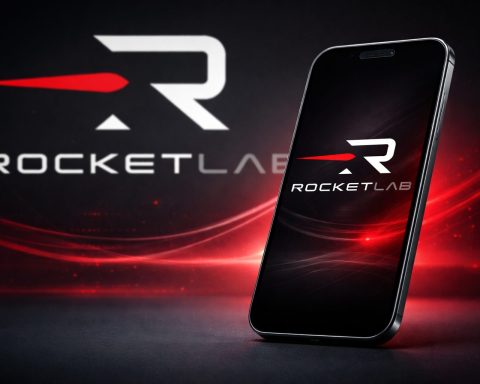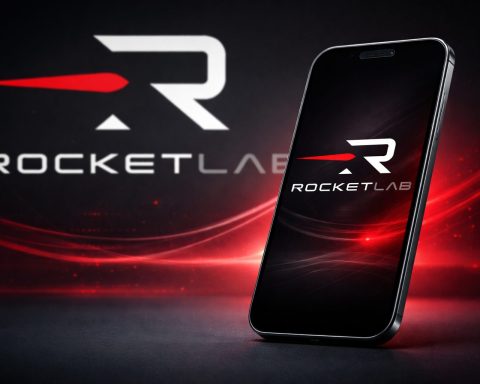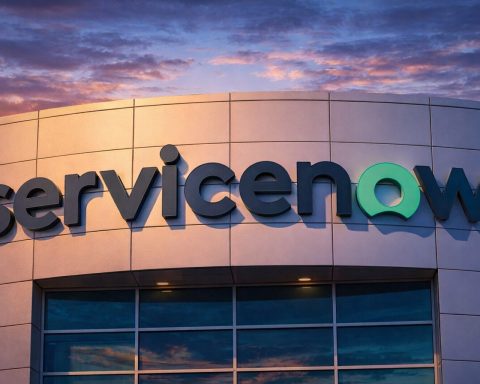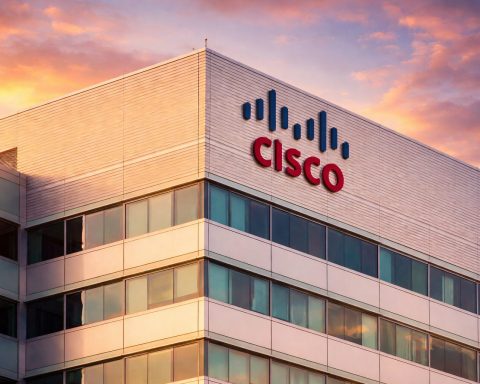Consumer Electronics & Hardware
- Google Pixel 10 Preview: Google has set August 20 for its Made by Google 2025 event, where the flagship Pixel 10 smartphone series is expected to debut ahead of Apple’s next iPhone [1]. The Pixel 10 line is poised to showcase deeper integration of generative AI features via Google’s new Gemini model [2]. Leaked details point to an AI-driven “Camera Coach” that would give real-time photography tips, and a conversational photo editing tool that lets users ask the AI to adjust images (e.g. tweak brightness or remove objects) [3]. On the hardware side, the standard Pixel 10 is likely to gain a telephoto camera lens for the first time – a feature previously reserved for Pixel Pro models [4]. Google even teased this upgrade by releasing an official preview image showing a triple-lens setup on the Pixel 10 [5]. All new Pixel 10 devices should run on Google’s upcoming Tensor G5 chip, promising improved performance and efficiency over the last generation G4 [6].
- Apple iPhone 17 Rumors: Apple’s fall hardware event (reportedly set for September 9) is expected to unveil the iPhone 17 lineup alongside new Apple Watch and AirPods updates [7]. Early reports claim the base iPhone 17 will get a significant redesign to more closely match the Pro models, including a slightly larger 6.3‑inch display with 120 Hz refresh rate (up from 60 Hz previously) [8]. Camera upgrades are anticipated as well – potentially a 24 MP front camera – and new body colors like purple and green have been tested [9]. The “thinnest iPhone ever” may emerge in the form of an ultra-thin iPhone 17 Air model to replace the current Plus variant, though this is still speculative. Leaked concept renders suggest the iPhone 17 Pro’s triple rear cameras could be arranged in a single horizontal bar spanning the back of the phone [10]. Apple might also swap out the Pro models’ titanium frame for aluminum to reduce costs and weight [11]. Meanwhile, the iPhone 17 Pro Max could become slightly thicker to accommodate a larger battery, addressing power users’ demands for longer life [12]. According to supply chain chatter, Apple is likely to price the base iPhone 17 around $800, with the top-tier Pro Max coming in near $1,250 [13].
- Kodak Denies Shutdown Reports: In other hardware business news, Eastman Kodak publicly refuted rumors that it is on the verge of shutting down operations. Major outlets had noted Kodak’s latest earnings report raised “going concern” flags about the company’s ability to meet debt obligations due within a year [14]. Kodak responded with a blunt statement that it has “no plans to cease operations, go out of business, or file for bankruptcy protection.” The company insists it is “confident it will repay, extend, or refinance its debt” before deadlines and foresees a stronger balance sheet by early next year, after executing planned transactions [15] [16]. Kodak detailed plans to use a $300 million cash infusion (expected in December 2025 from a pension plan termination) to pay down a large portion of its $477 million term debt, and to address the remainder through refinancing [17] [18]. The 133-year-old camera and film company, which previously filed bankruptcy in 2012, says media reports misinterpreted an accounting disclosure and were “misleading and missing critical context.” It emphasized that recent consumer nostalgia for retro tech – from 35mm film to flip phones – has given the brand a modest boost [19]. “Kodak has no plans to go out of business,” the company reiterated, aiming to dispel the sudden wave of speculation [20].
Cybersecurity
- Norwegian Dam Sabotage Blamed on Russian Hackers: A startling cyber-attack in Norway underscored growing threats to critical infrastructure. Norway’s Police Security Service (PST) revealed that pro-Russian hackers briefly seized remote control of a hydroelectric dam’s floodgates in April, causing an intentional water spill [21]. Attackers penetrated the control systems at the Bremanger dam in western Norway and opened one floodgate for about four hours, surreptitiously releasing millions of gallons of water (roughly three Olympic pools’ worth) before operators regained control [22]. Fortunately, no damage or injuries resulted, as water levels were well below flood capacity [23] [24]. On August 14, PST Chief Beate Gangås formally attributed the dam hack to actors linked with Russia – marking the first official Norwegian accusation against Moscow for the incident [25] [26]. “Over the past year, we have seen a change in activity from pro-Russian cyber actors,” Gangås noted, citing the dam breach as a prime example [27]. “The aim of this type of operation is to influence and to cause fear and chaos among the general population. Our Russian neighbour has become more dangerous,” she warned in her remarks [28]. Norwegian authorities view the sabotage as part of a broader pattern of hostile cyber operations by Russia amid heightened tensions over the Ukraine war. (Russian officials have denied involvement; the Russian Embassy in Oslo called the claims “unfounded and politically motivated” [29].) The incident has intensified Norway’s focus on protecting energy infrastructure. Intelligence officials noted that Norway, which relies heavily on hydropower, had already been on alert for potential attacks on dams and grids [30]. The dam hackers even purportedly posted a video on Telegram bragging about the breach under the name of a known pro-Russian cybercrime group [31] – a tactic European security agencies say is meant to sow fear. Norwegian cyber defense leaders are now urging vigilance, noting that what was once a theoretical threat has become reality.
Semiconductors
- US Government Eyeing Stake in Intel: In an extraordinary intersection of tech and policy, Intel – the iconic American chipmaker – may receive a direct investment from the U.S. government. Bloomberg first reported that the Trump administration has discussed buying a stake in Intel to prop up the struggling semiconductor firm [32]. Such a move would be unprecedented in recent times, reflecting Intel’s strategic importance amid fierce global competition in chips. The talks follow a meeting this week between President Donald Trump and new Intel CEO Lip-Bu Tan, after which Trump hailed the discussion as a “success” [33]. (Notably, just days prior, Trump had publicly urged Tan to resign over Intel’s ties to Chinese tech firms – an issue adding pressure to bolster Intel’s U.S. operations [34].) Intel has been losing ground in the race for advanced chips, especially AI processors, and has faced delays in its ambitious factory expansion plans [35]. A government capital injection could give Intel a much-needed lifeline as it restructures. White House spokesman Kush Desai, however, tempered expectations, stating that “discussion about hypothetical deals should be regarded as speculation unless officially announced by the administration.” [36] Intel declined to directly comment on the stake rumor but said it remains “deeply committed to supporting [President] Trump’s efforts to strengthen U.S. technology and manufacturing leadership.” [37] News of a potential government investment sent Intel’s stock up over 7% on Thursday [38]. Industry analysts are split on the idea – some argue Intel’s ~$50 billion annual revenue means it shouldn’t need a bailout, while others note that Trump has been pushing aggressive measures to secure domestic chip production and reduce reliance on Asia [39] [40]. “I think any deal involving the U.S. as an investor would likely come with incentives or tariffs to encourage customers like Nvidia, AMD, and Apple to use Intel’s foundry services,” observed Ben Bajarin, CEO of market research firm Creative Strategies [41]. The move would continue the administration’s campaign of intervention in sectors deemed vital – from semiconductors to rare earth minerals – as geopolitical competition over tech supremacy intensifies [42]. For Intel, which just warned it might exit the chip fabrication business if it can’t fill its new factories’ capacities [43] [44], an infusion of federal support might prove crucial in its bid to regain leadership in chip manufacturing.
Telecom
- Spain Defies Pressure on Huawei Deal: A dispute over Huawei technology in Spain has highlighted a rift between national tech policy and Western security warnings. The Spanish government acknowledged this week that Huawei, the Chinese telecom giant, is serving as an advisor in a new 5G network security center in Spain [45]. This comes on top of a €12.3 million contract Spain’s Interior Ministry quietly awarded to Huawei in July for data storage hardware to house judicial wiretap records [46] [47]. Both revelations have drawn sharp criticism from the United States and EU officials, who have urged Spain to drop Huawei due to espionage fears. According to a Spanish news report, U.S. Director of National Intelligence Tulsi Gabbard even gave Madrid an ultimatum – cancel the Huawei deal by August 31 or face limits on intelligence sharing between the U.S. and Spain [48]. Spain, however, appears unwilling to budge. Prime Minister Pedro Sánchez’s administration insists Huawei’s involvement is limited and poses no security risk. Officials noted that in the 5G security center, Huawei is merely one advisory member alongside other vendors like Nokia and Ericsson [49]. They also defended the Interior Ministry contract by stressing it is strictly for high-end server hardware, not sensitive data management. In other words, Huawei will supply storage equipment (specifically OceanStor 6800 V5 servers) but will not handle the data stored on them [50] [51]. The government argues this distinction means security can be maintained. Huawei, for its part, has asserted that its products in the Spanish market “comply strictly with local laws and norms.” [52] Despite mounting external pressure – the European Commission classifies Huawei as a “high-risk” 5G supplier, and countries like Germany and France are actively ripping Huawei gear out of networks [53] – Spain has so far charted its own path. Analysts say Spain values its relationship with China (Sánchez met President Xi Jinping last year to deepen ties [54]) and may be calculating that limited Huawei engagements can be managed without compromising national security. The coming weeks will test that resolve: Washington and Brussels will be watching whether Spain ultimately scales back the Huawei deal or holds firm, potentially fracturing Western unity on telecom security.
Space Tech
- ULA’s New Vulcan Rocket Debuts in US Space Force Mission: The United Launch Alliance Vulcan Centaur rocket made a high-profile maiden national security launch this week, signaling a new era in U.S. military space lift. On August 12 at Cape Canaveral, ULA’s most powerful Vulcan configuration to date roared to life with a cluster of four solid boosters, successfully carrying an experimental payload for the U.S. Space Force directly to geosynchronous orbit [55] [56]. This mission, designated USSF-106, lofted the Navigation Technology Satellite-3 (NTS-3) – the first new experimental navigation satellite the U.S. has launched in 48 years [57] [58]. NTS-3 is a cutting-edge testbed for next-generation GPS-like capabilities. Built by L3Harris Technologies and Northrop Grumman, the satellite features a reprogrammable software-defined radio and a sophisticated phased-array antenna that can dynamically shape its signals. “This satellite will be able to focus powerful beams to ground forces and [operate in] combat jamming environments,” explained Andrew Builta, L3Harris’s PNT payload program manager [59] [60]. The design aims to make it far more resilient against interference or spoofing attempts that threaten today’s GPS. Builta hailed the platform as “a truly game-changing capability” for secure military navigation and timing [61] [62]. The Vulcan rocket’s performance also marks a major milestone for ULA. This was only Vulcan’s second flight since its introduction (following a test launch in 2024) and its first carrying an operational Space Force mission, after years of development delays. The 202-foot-tall rocket blasted off from SLC-41 and flew one of ULA’s longest missions, a 7-hour direct insertion to GEO requiring multiple upper-stage burns [63]. ULA confirmed the mission success, and early indications show NTS-3 in good health. The Pentagon is watching Vulcan’s progress closely, as the rocket is slated to replace the veteran Atlas V and assume a critical role launching national security satellites. With this week’s achievement, Vulcan is a step closer to full certification. It also demonstrates the rocket’s heavy-lift credentials by delivering a payload over 22,000 miles away. Space observers noted the significance: ULA proved out Vulcan’s booster heft and Centaur V upper stage in an operational scenario, easing concerns after its rocky development phase. For the Space Force, the mission both advances cutting-edge satnav tech and validates a key new launcher as the U.S. modernizes its space capabilities.
Automotive Tech
- GM’s Silverado EV Shatters Range Record:General Motors has blitzed past a major electric vehicle milestone – driving an EV over 1,000 miles on a single charge. In a closely monitored test, a 2026 Chevrolet Silverado EV Max Range work truck achieved 1,059.2 miles of range on one full battery charge [64]. This astonishing run far exceeds the previous world record (749 miles, set by Lucid Motors earlier this year) and more than doubles the truck’s official EPA range of 493 miles [65]. GM’s engineering team conducted the multi-day trial on public roads in Michigan, hyper-optimizing every factor to maximize efficiency. Crucially, the vehicle itself was bone stock – no special modifications or extra battery capacity were added [66] [67]. Instead, engineers employed a suite of efficiency tricks within safe limits: driving at a steady 20–25 mph (the Silverado’s “sweet spot” for minimal drag and power use), minimizing braking and acceleration, overinflating tires to the top of their allowable range, removing the spare tire for weight, aligning the wheels perfectly, adding a bed cover for aerodynamics, and even keeping wipers at their lowest position to reduce air resistance [68] [69]. Climate control was turned off to conserve energy [70]. These measures, combined with meticulous driving habits, allowed the Silverado to sip power at an incredibly low rate – effectively using almost every bit of the Ultium battery’s energy to propel the truck forward. “Getting this kind of range on a full charge doesn’t happen by accident,” said Kurt Kelty, GM’s Vice President of battery technology. “It takes deep integration across battery chemistry, drive unit efficiency, software and vehicle engineering — and that’s exactly what the team delivered.” [71] Kelty hailed the result as proof of how far EV tech has advanced, calling it “a great example of how far our EV technology has come, and the kind of innovation we’re building on every day at GM.” [72] The record attempt, which had engineers driving in one-hour shifts, was more than just a publicity stunt. GM collected valuable data on real-world EV performance at the edge of efficiency, insights that will feed back into improving their electric trucks for customers [73] [74]. The achievement also directly targets consumer “range anxiety” concerns. By demonstrating that four figures of miles are possible on one charge – albeit under extreme hypermiling conditions – GM is making a bold statement about the future of long-range electric vehicles. After completing the 1,059-mile journey (with the truck’s battery essentially empty), the team humorously 3D-printed a trophy using power drawn from the same truck’s battery, celebrating the new world record [75] [76]. While everyday drivers won’t replicate these results, the feat showcases the upper limits of current EV capabilities and points toward more incremental range gains in production models. GM’s Silverado EV, set to launch next year, now enters the market with undeniable range credibility – and a Guinness-worthy headline to boot.
Sources: TechCrunch [77] [78] [79] [80] [81] [82] [83] [84]; Kodak [85] [86]; TechCrunch [87] [88]; The Guardian [89] [90]; Reuters [91] [92] [93]; Bank Info Security [94] [95] [96]; Space.com [97] [98]; GM Press Release [99] [100].
References
1. techcrunch.com, 2. techcrunch.com, 3. techcrunch.com, 4. techcrunch.com, 5. techcrunch.com, 6. techcrunch.com, 7. techcrunch.com, 8. techcrunch.com, 9. techcrunch.com, 10. techcrunch.com, 11. techcrunch.com, 12. techcrunch.com, 13. techcrunch.com, 14. techcrunch.com, 15. www.kodak.com, 16. www.kodak.com, 17. techcrunch.com, 18. techcrunch.com, 19. techcrunch.com, 20. www.kodak.com, 21. techcrunch.com, 22. techcrunch.com, 23. www.theguardian.com, 24. www.theguardian.com, 25. www.theguardian.com, 26. www.theguardian.com, 27. www.theguardian.com, 28. www.theguardian.com, 29. www.theguardian.com, 30. www.theguardian.com, 31. www.theguardian.com, 32. www.reuters.com, 33. www.theverge.com, 34. www.reuters.com, 35. www.reuters.com, 36. www.reuters.com, 37. www.reuters.com, 38. www.reuters.com, 39. www.reuters.com, 40. www.reuters.com, 41. www.reuters.com, 42. www.reuters.com, 43. www.reuters.com, 44. www.reuters.com, 45. www.bankinfosecurity.com, 46. www.bankinfosecurity.com, 47. www.bankinfosecurity.com, 48. www.bankinfosecurity.com, 49. www.bankinfosecurity.com, 50. www.bankinfosecurity.com, 51. www.bankinfosecurity.com, 52. www.bankinfosecurity.com, 53. www.bankinfosecurity.com, 54. www.bankinfosecurity.com, 55. www.space.com, 56. www.space.com, 57. www.space.com, 58. www.space.com, 59. www.space.com, 60. www.space.com, 61. www.space.com, 62. www.space.com, 63. www.space.com, 64. news.gm.com, 65. news.gm.com, 66. news.gm.com, 67. news.gm.com, 68. news.gm.com, 69. news.gm.com, 70. news.gm.com, 71. news.gm.com, 72. news.gm.com, 73. news.gm.com, 74. news.gm.com, 75. news.gm.com, 76. news.gm.com, 77. techcrunch.com, 78. techcrunch.com, 79. techcrunch.com, 80. techcrunch.com, 81. techcrunch.com, 82. techcrunch.com, 83. techcrunch.com, 84. techcrunch.com, 85. techcrunch.com, 86. www.kodak.com, 87. techcrunch.com, 88. www.theguardian.com, 89. www.theguardian.com, 90. www.theguardian.com, 91. www.reuters.com, 92. www.reuters.com, 93. www.reuters.com, 94. www.bankinfosecurity.com, 95. www.bankinfosecurity.com, 96. www.bankinfosecurity.com, 97. www.space.com, 98. www.space.com, 99. news.gm.com, 100. news.gm.com










